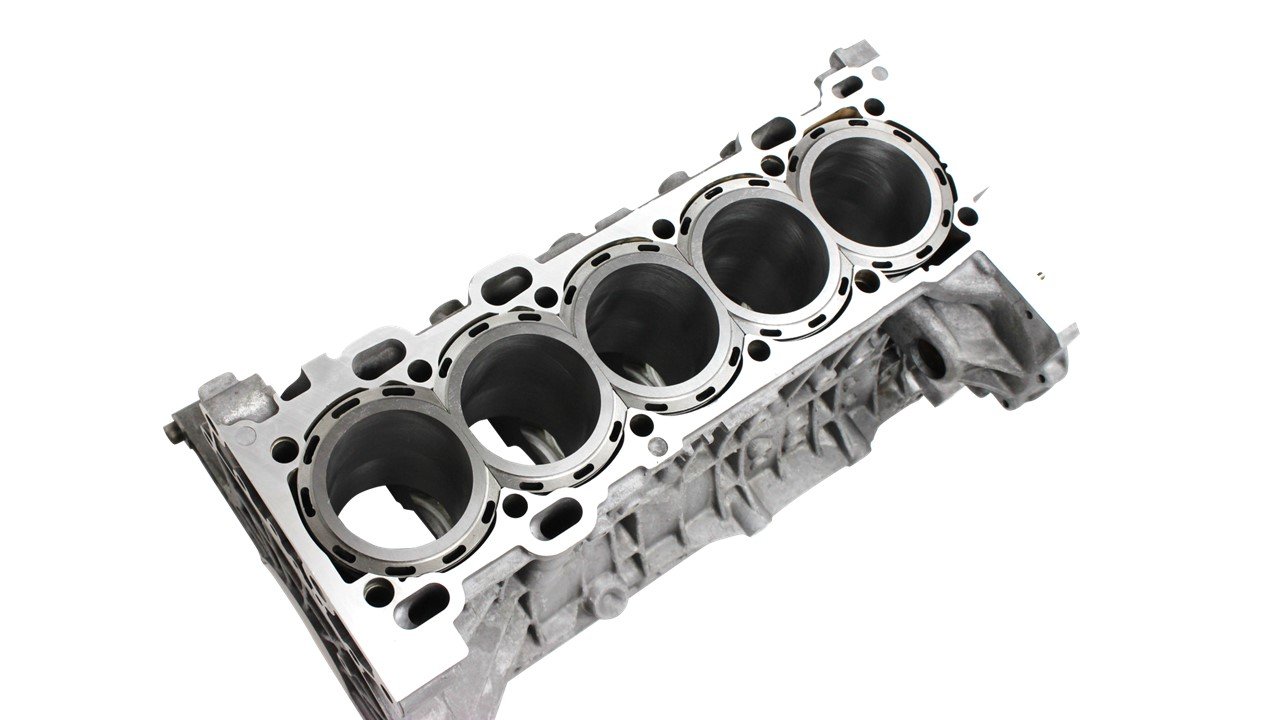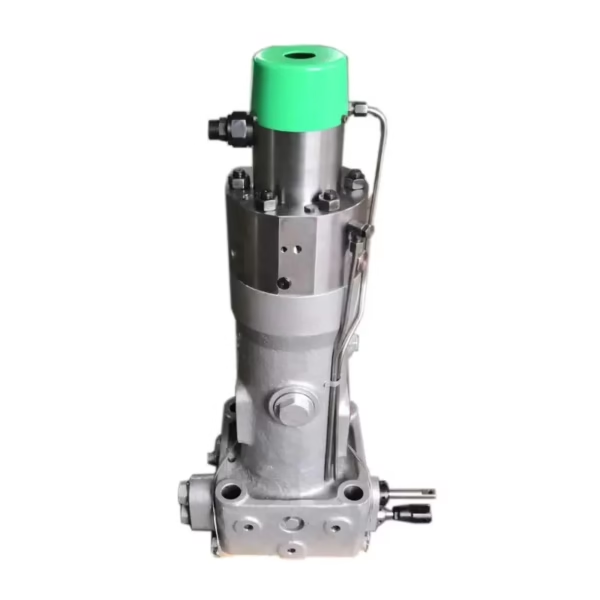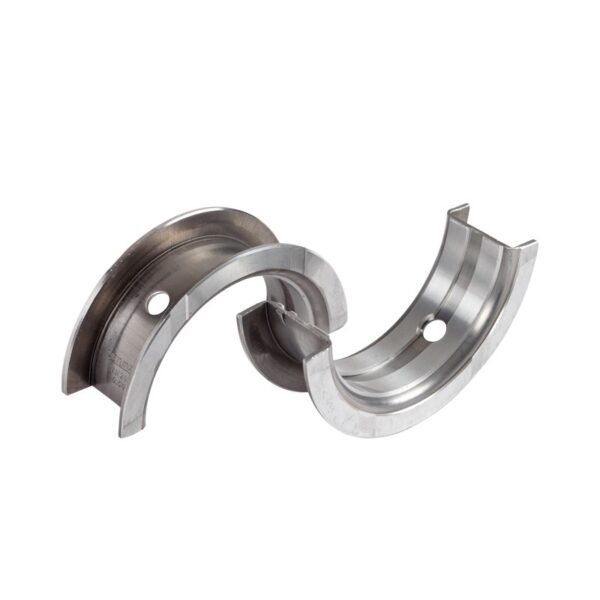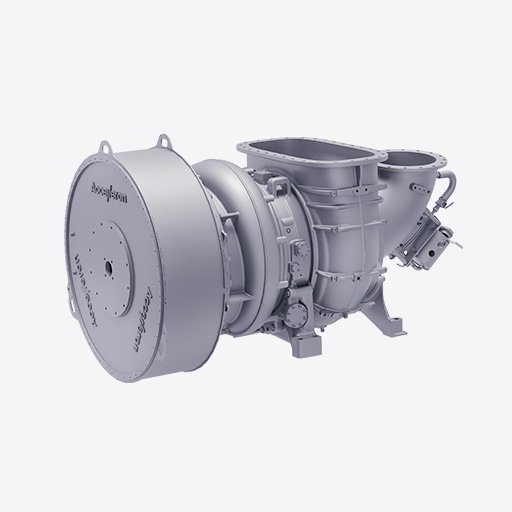A marine engine cylinder is the fundamental working chamber where combustion occurs, converting fuel’s chemical energy into mechanical power. The cylinder liner is a removable, cylindrical sleeve fitted within the cylinder block, forming the actual bore in which the piston reciprocates.1
Engine Cylinder: Function and Environment
The cylinder is the heart of power generation. Its primary functions are:
- Combustion Chamber: It contains the burning fuel-air mixture, allowing the expansion of hot gases to push the piston.2
- Pressure Containment: It must withstand the extremely high pressures and temperatures generated during combustion.
- Heat Transfer: It facilitates the transfer of heat from the combustion process to the cooling medium.
The cylinder structure, usually integrated into the cylinder block, provides the overall housing. It’s designed for immense strength and rigidity, often with integrated cooling passages.
Cylinder Liner: Function and Design
The cylinder liner is a critical wear part, designed to be replaced, thus protecting the more expensive cylinder block.3 Its functions include:
- Wear Surface: Provides a hard-wearing, smooth surface for the piston rings to slide against, ensuring a gas-tight seal and minimizing friction.4
- Heat Transfer: Efficiently transfers heat from the hot combustion gases and piston to the cooling water or oil flowing through passages in the cylinder block surrounding the liner.
- Lubrication: Features a precisely engineered surface texture (honing pattern) and often contains lubrication ports to ensure adequate oil film for piston ring lubrication.5
- Corrosion Resistance: Must resist corrosion from combustion byproducts and cooling media.6
Cylinder liners are typically made from high-grade cast iron, often alloyed with chromium, molybdenum, or vanadium for enhanced wear resistance and strength.7 They come in two main types:
- Wet Liners: These liners are directly exposed to the engine’s cooling water on their outer surface.8 They require seals (O-rings) at their top and bottom to prevent coolant leakage. Wet liners offer superior cooling efficiency.9
- Dry Liners: These are pressed or shrunk-fitted into a bore in the cylinder block and are not directly in contact with the coolant.10 They rely on direct metallic contact with the cylinder block for heat transfer to the surrounding coolant passages. Dry liners are simpler to install but offer less direct cooling.11
Forces, Challenges, and Maintenance
Both the cylinder and liner endure extreme conditions:
- High Pressures & Temperatures: Leading to thermal stress, fatigue, and potential distortion.
- Friction & Wear: Constant rubbing of piston rings against the liner bore causes wear.12 This wear can be accelerated by abrasive particles, corrosive combustion byproducts (e.g., from high-sulfur fuel), or insufficient lubrication.13
- Scuffing/Scoring: Localized welding and tearing of material between piston rings and the liner, often due to high temperatures, insufficient lubrication, or overload, leading to severe damage.14
- Cracking: Thermal shock, manufacturing defects, or excessive stress can lead to cracks in the liner, causing coolant or combustion gas leaks.
- Corrosion: From acidic combustion byproducts or issues with the cooling water chemistry.15
Key maintenance practices are vital for cylinder and liner longevity:
- Regular Cylinder Lubrication: Ensuring correct oil feed rates and appropriate lubricant type (especially crucial for two-stroke engines using separate cylinder oil).
- Bore Polishing/Glazing: Over time, the honed surface can become overly smooth (glazed), impairing oil retention. Controlled wear or re-honing may be needed.
- Cylinder Compression/Leakage Tests: To assess sealing integrity, often indicating liner wear or piston ring issues.
- Liner Wear Measurements: Periodic measurements of the liner bore diameter to track wear rates and determine replacement intervals.16
- Visual Inspection: During piston or cylinder head overhauls, checking for signs of scuffing, scoring, pitting, or cracks.
- Cooling System Maintenance: Proper coolant quality and temperature control prevent thermal stress and corrosion.
The cylinder and liner’s condition directly impacts engine performance, fuel consumption, emissions, and overall reliability. Their failure can lead to severe loss of power, increased oil consumption, and significant engine damage.17
We offer an extensive range of marine engine brands and their associated spare parts, providing comprehensive solutions for both main propulsion and auxiliary power needs across diverse vessel types. Our supply capability covers various generations and models, ensuring support for a wide array of marine applications.
Featured Brands and Engine Series/Models:
SULZER:
- Two-Stroke Engines:
- RD/RND Series: RD68, RND76, RND76M, RND90, RND90M (Classic large-bore, low-speed engines, still in operation).
- RLA/RLB Series: RLA(B)56, RLA(B)66, RLA(B)76, RLB90 (Developed two-stroke designs).
- RTA/RT-Flex Series: RTA38, RTA48(T), RTA52, RTA58, RTA62, RTA72, RTA76, RTA84, RTA84M, RTA84C, RTA96 (Modern, fuel-efficient, electronically controlled two-stroke engines).
- Four-Stroke Engines:
- Z Series: ZL40/48, 16ZAV40S (Medium-speed engines).
- RF Series: RF44, RF56 (Often used for auxiliary power or generator sets).
- TAD Series: TAD36, TAD48 (For specific applications).
MAN (including pre and post-MAN B&W models):
- Two-Stroke Engines (KZ, KSZ, K, L, S, MC/MC-C, ME/ME-C): 40/54A, 52/90N, 57/80C, KZ57/80F, KSZ70/125, KSZ78/155, 90/160A, 52/55L, 58/64, 90/190C, L60/105E, 70/120E, 70/125C, L, KSZ78/155A, KSZ70/125B, L52/55A, 40/45 (A broad spectrum covering main propulsion and auxiliary engines).
B&W (Burmeister & Wain – prior to MAN B&W merger):
- MC/MCE Series: L35MC, L60MC, L80MC, L55GFCA, L80GFCA, L80GB, 74VT2BF, K62EF, K74EF, K84EF, K45GFC, K67GFK, K80GFK, K90GFS, 45HU, L70MC (Various generations of two-stroke diesel engines).
- MC-C/ME-C Series: L50MC, S60MC, S70MC, K80MC, S80MC, K90MC-C, L67GFCA, L90GB (Electronically controlled and conventional two-stroke engines).
- VT2BF/EF Series: 50VT2BF, 62VT2BF, K84EF (Older models still in service).
MITSUBISHI:
- UEC/UET Series: UEC37L/LA/LS, UEC45HA, UEC60L/LA/LS, UEC45L/LA/LS, UET45/75C, UEC52/125H, UEC52L/LA/LS, UET45/80D, UEC52/90D, UEC(T)52/105D, UEC45/115H, UEC37/88H, UEC37H (Mitsubishi’s proprietary two-stroke and some four-stroke engine series).
PIELSTICK:
- PA Series: PA6, PC3, PC2-2, IHI PC2-5, PC4, PC2-6, PC4-2L, PC4-570, PA5 (High-speed, compact four-stroke engines, commonly used for generator sets or auxiliary propulsion).
AKASAKA:
- UET/UEC/DM/AH Series: UET45/80D, UEC52/105D, DM51SS, UEC 60/150H, UEC 60H, A31, A34, A37, A41, AH27, AH28, AH30, AH36, AH38, AH40, DM30, DM36, DM38, DM46, DM47 (A prevalent engine brand, particularly in Japanese-built vessels).
DEUTZ:
- RBV/TBD/BVM Series: RBV8M358, RBV8M540, RBV16M640, TBD620L6, BVM350, BVM540, BF6M716 (Various four-stroke medium- and high-speed diesel engines for auxiliary and smaller main propulsion applications).
HANSHIN:
- EL/LH/LU/LUN/LUD/LUS Series: EL30, EL32, EL35, EL40, EL44, LH28RG, LH31G, LU28(A,R,G), LU32, LU35, LU38, LU46(A), LU50, LU54, LUN28, LUN30, LUD32, LUD35, LUS38 (Another significant engine brand commonly found in Japanese vessels).
NIIGATA:
- MG/M Series: MG40X(EX), M34X, 6M28BF, TM31X (Medium-speed diesel engines, typically used in small and medium-sized vessels).
MAK:
- M/MU/AK/AKM Series: M332, M453AK, MU551AK, MU552AK, M601, MU452AK, 451AK, 6M453AK, 9M453C, 6M601C, 8M601 (Medium-speed four-stroke engines, widely used in various marine applications).
WARTSILA:
- 20/22/26/32/38/46/GD/TKR Series: 22, 32, 31, 26, 20S, 28, 38, 46, 32GD, 46GD, 14, TKR22, HFR-V32, NOHAB (Wärtsilä’s broad portfolio of medium- and high-speed diesel engines for main propulsion, auxiliary, and generator sets).
DAIHATSU:
- PS/PKT/DS/DL/DK/PL Series: PS-18, PS-22, PS-20, PS-26, PS-30, PKT-14, PKT-16, PKTD-16, DS-18, DS-22, DS-26, DS-28, DS-32, DL-14, DL-16, DL-19, DL-20, DL-22, DL-24, DL-26, DK-20, PL-24 (Compact and reliable engines primarily used for auxiliary power and generator sets).
CUMMINS:
- BT/CT/NT/KTA/QSK/QSM Series: 4BT3.9, 6BT(A)5.9, 6CT8.3, NT(A)855, N14, KTA19, KTA38, KTA50, QSK19, QSM11 (Robust and durable engines for marine auxiliary power, generator sets, and some smaller main propulsion applications).
CATERPILLAR:
- 3000/3100/3300/3400/3500/3600 Series & C Series: 3054, 3056, 3066, 3106, 3126, 3306, 3406, 3408, 3412, 3508, 3512, 3516, 3606, 3608, 3612, 3616, 3618, C1.5, C2.2, C7, C9, C10, C12, C15, C16, C18, C30, C32 (Reliable and widely used engines across a vast range of main propulsion, auxiliary, and generator set applications).
SCANIA:
- DI Series: DI 09, DI 13, DI 16 (High-performance diesel engines designed for marine applications, typically used as auxiliary and smaller main propulsion engines).




